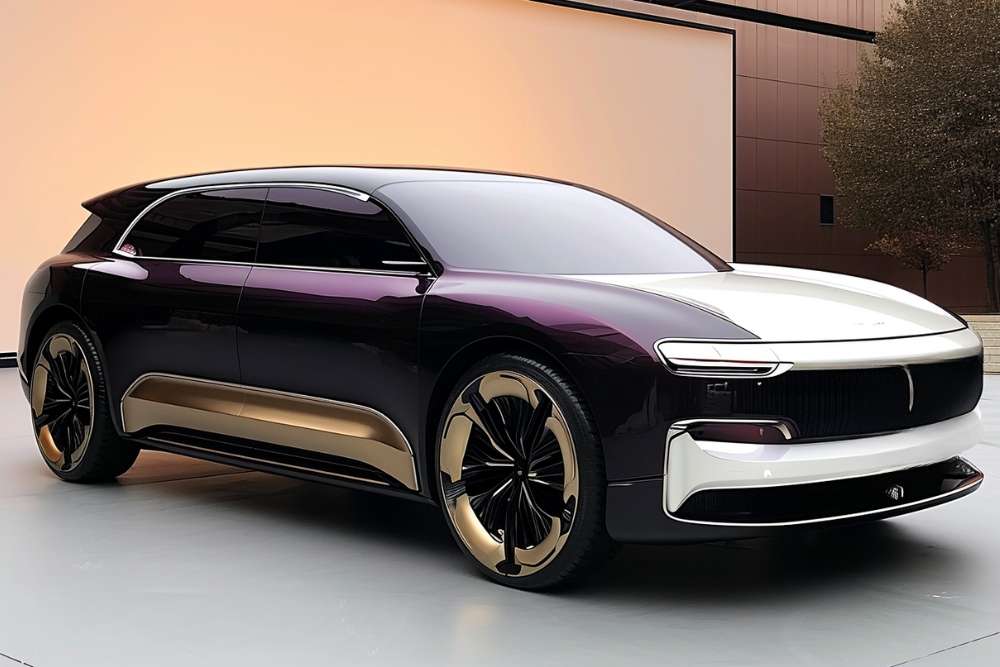The Evolution of Luxury Cars from China: What to Know
Once known primarily for affordability, China’s automotive industry has rapidly reshaped its image, now turning global attention toward its striking emergence in the luxury segment. With futuristic aesthetics, advanced in-car technology, and bold engineering choices, a new generation of premium vehicles is taking shape—designed to rival long-established Western and Japanese counterparts. This guide highlights how perceptions are shifting and what many are beginning to notice about this evolving market. Explore how innovation and design are driving this transformation in ways that continue to surprise both industry watchers and car enthusiasts alike.

What Drives Chinese Car Innovation in the Luxury Segment?
Chinese car innovation in the luxury segment stems from substantial government investment in electric vehicle technology, strategic partnerships with international brands, and a focus on cutting-edge manufacturing processes. Companies like BYD, NIO, and Xpeng have leveraged China’s expertise in battery technology and electronics manufacturing to create vehicles that compete directly with established luxury brands. The Chinese government’s push toward carbon neutrality by 2060 has accelerated research and development in sustainable automotive technologies, positioning Chinese manufacturers at the forefront of the electric vehicle revolution.
How Are Electric Luxury Cars Changing the Market?
Electric luxury cars from China are reshaping consumer expectations through impressive performance metrics and innovative features. Models like the NIO ET7 and Lucid Air Dream Edition offer ranges exceeding 500 kilometers on a single charge, while maintaining acceleration times that rival traditional high-performance gasoline engines. Chinese manufacturers have also pioneered battery-swapping technology, allowing drivers to replace depleted batteries in under five minutes rather than waiting for lengthy charging sessions. This technological advancement addresses one of the primary concerns consumers have had about electric vehicle adoption.
What Smart Car Technology Sets Chinese Vehicles Apart?
Smart car technology in Chinese luxury vehicles often surpasses what’s available in Western counterparts. Features include advanced artificial intelligence systems that learn driver preferences, 5G connectivity for real-time navigation and entertainment, and sophisticated autonomous driving capabilities. Many Chinese luxury cars come equipped with facial recognition systems, voice control that responds to natural language, and over-the-air software updates that continuously improve vehicle performance. The integration of smartphone-like interfaces and cloud-based services creates a seamless digital ecosystem within the vehicle.
Are Chinese Luxury Vehicles Truly Affordable Luxury Vehicles?
Chinese luxury vehicles often provide premium features at more competitive price points than traditional luxury brands. While maintaining high-quality materials and advanced technology, manufacturers like Hongqi, Lynk & Co, and WEY offer luxury amenities typically found in vehicles costing significantly more from European or American manufacturers. This pricing strategy reflects lower manufacturing costs in China, government subsidies for electric vehicles, and a business model focused on gaining market share rather than maximizing profit margins per unit.
What Global Impact Are Chinese Luxury Cars Having?
In markets worldwide, Chinese luxury cars are gaining recognition for their innovative approach to vehicle design and technology integration. European markets have seen increasing acceptance of brands like Polestar (Volvo’s electric performance brand manufactured in China) and MG’s premium offerings. The global chip shortage highlighted China’s strategic advantage in semiconductor production, allowing Chinese manufacturers to maintain production while competitors faced delays. This reliability has enhanced the reputation of Chinese automotive engineering and manufacturing capabilities internationally.
How Do Chinese Luxury Car Prices Compare to Traditional Brands?
Chinese luxury vehicles typically offer significant value propositions compared to established premium brands. The pricing landscape varies considerably based on features, market positioning, and regional factors, making it essential to understand current market dynamics.
| Vehicle Category | Chinese Brand Example | Traditional Competitor | Price Difference |
|---|---|---|---|
| Electric Sedan | NIO ET7 (~$70,000) | BMW i7 (~$105,000) | 30-35% lower |
| Luxury SUV | Li Auto L9 (~$55,000) | Audi Q7 (~$75,000) | 25-30% lower |
| Performance EV | BYD Han EV (~$35,000) | Tesla Model S (~$95,000) | 60-65% lower |
| Premium Hybrid | WEY VV7 (~$25,000) | Lexus RX (~$50,000) | 45-50% lower |
Prices, rates, or cost estimates mentioned in this article are based on the latest available information but may change over time. Independent research is advised before making financial decisions.
The evolution of luxury cars from China represents a fundamental shift in the global automotive industry. As Chinese manufacturers continue investing in research and development, forming strategic partnerships, and expanding international presence, their influence on luxury car standards will likely continue growing. This transformation challenges consumers to reconsider preconceptions about automotive excellence while providing new options for those seeking premium vehicles with advanced technology at competitive prices. The success of Chinese luxury cars demonstrates how rapid innovation, strategic planning, and market understanding can reshape entire industries within a relatively short timeframe.




